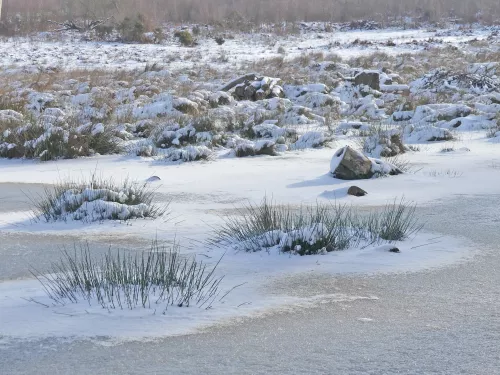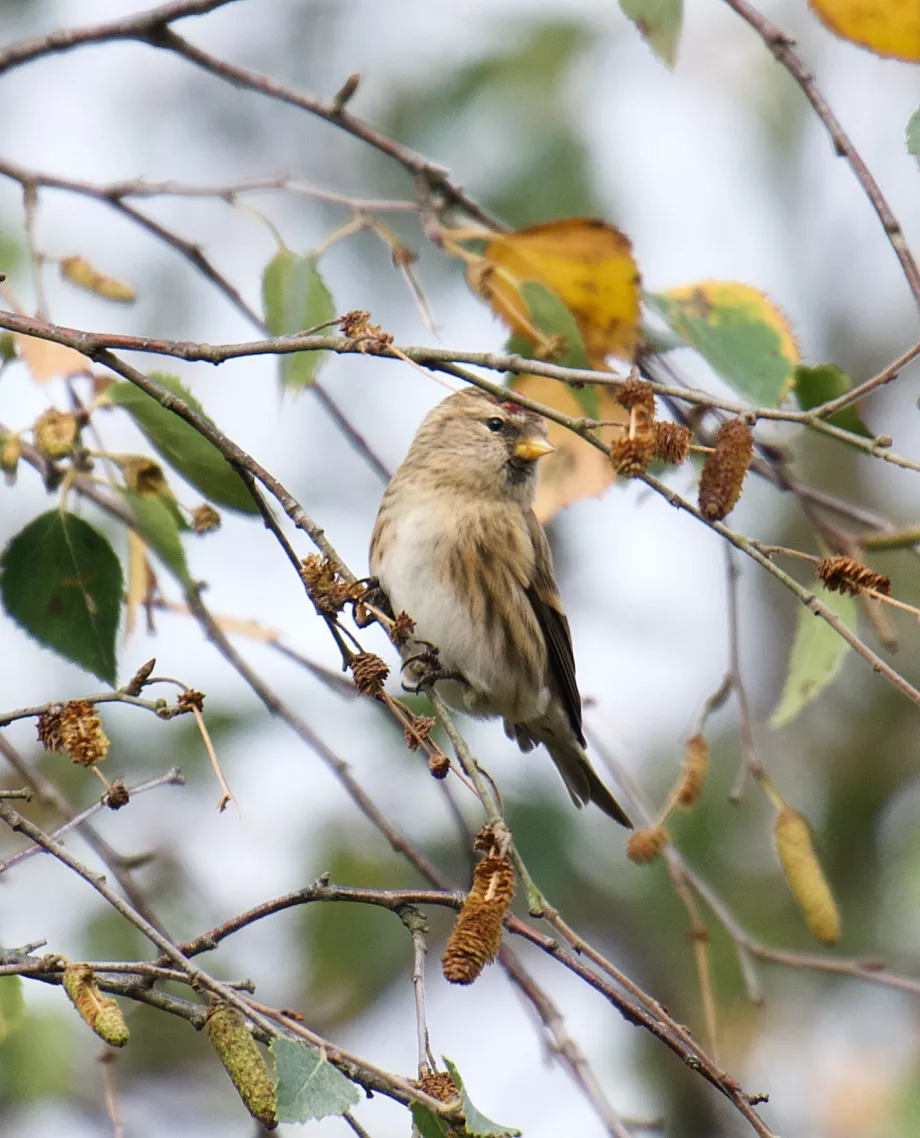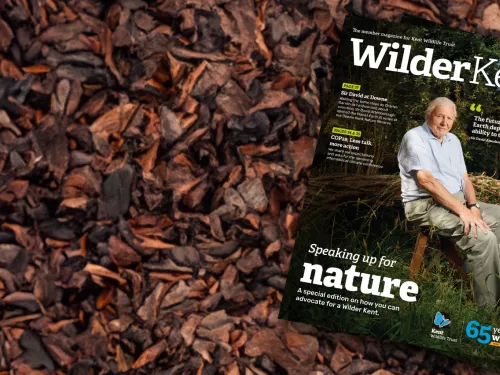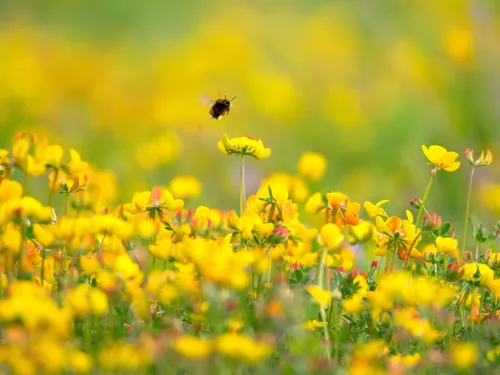
Hothfield Heathlands in March
Kent Wildlife Trust volunteer, Margery Thomas, describes the snowy sights of the past month at Hothfield Heathlands and what we can look forward to in March.


Meanwhile, the birds are increasingly active. Alder cones remain on the tree until after the new spring catkins release their pollen, and two acrobatic finches, the redpoll and siskin have been sighted hanging upside-down as their slender beaks probe the small alder cones. They are easiest to spot now among bare branches. The lesser redpoll, just bigger than a blue tit, is named after the red forehead visible in both sexes. The male also has pink on the breast and face during breeding. They are resident in the UK but less common in the southeast so perhaps these were winter visitors. They like very small seeds and niger seed in bird feeders has attracted them into gardens recently. Numbers have declined so they are on the Red List.

by Nick Green
The siskin is another agile seed eater, inhabiting mixed woodland but also attracted to garden feeders. The black wings have a conspicuous yellow bar and the forked black tail is edged with yellow. Siskins are lively and sociable and resident in the UK although some may be overwintering here from Europe.
Some chiffchaffs have started overwintering in the UK thanks to the warmer climate, but many arrive here from Africa in early spring and have been heard singing 'chiffchaff chiffchaff’ from tree tops on the reserve since mid-February. This small olive-brown member of the warbler family weighs less than a £1 coin. It feeds on insects picked from trees or snapped up in flight as it flits through trees and shrubs flicking its tail. Chiffchaffs are building nests now, ready for the first of two broods. The domed nest is on or near the ground, hidden in undergrowth. All ground-nesting birds are seriously impacted when disturbed by dogs running and playing freely off the paths. This may cause them to abandon nests or prevent them from collecting food for themselves and their brood.
Many birds need insects to feed their young; later on insect- and seed-eaters find their food among long grass so planning now to leave a patch of lawn to grow long will benefit bird and insect species.
Please shut the pedestrian gates that you use. Paths on the reserve may no longer have the consistency of treacle (a volunteer’s description) but wearing the right footgear makes it possible to walk straight through, enjoying any mud or puddles, rather than round. This avoids widening the paths unnecessarily and trampling the fragile plants, including the seedling heathers and tiny ephemerals that grow on the close-cropped, species-rich edge habitats. Please keep dogs close to you at all times, do not let your dog run and play off the paths and through the areas of heather and gorse.

Kent Wildlife Trust volunteer, Margery Thomas, describes the snowy sights of the past month at Hothfield Heathlands and what we can look forward to in March.

We have over 65 nature reserves and sites across Kent for you to explore and discover the local wildlife you love. Our members contributions are vital in our work to protect, maintain and develop these.

Support our work - we need you now more than ever support our fight against the climate emergency here in Kent, where local solutions can make a big difference.